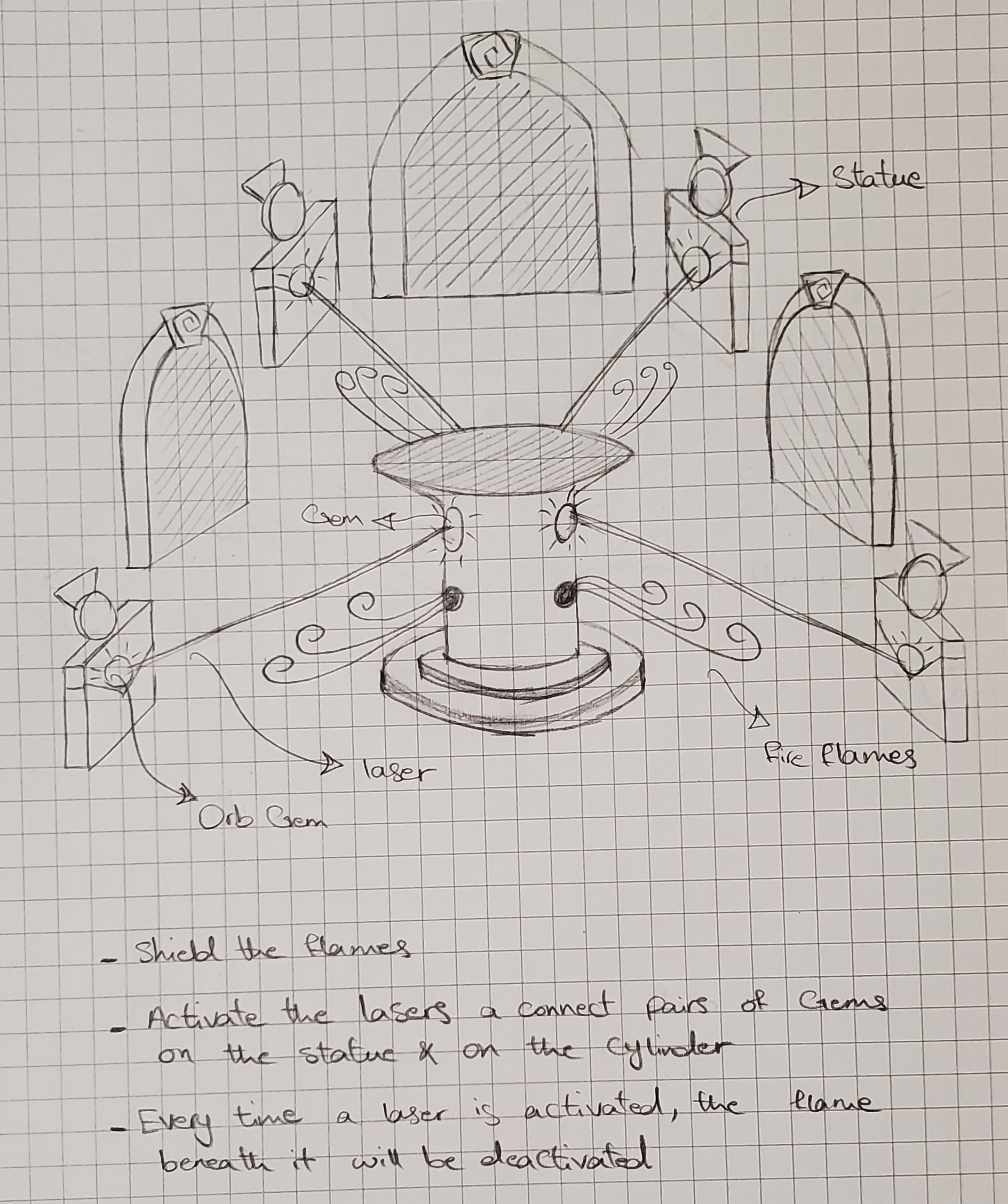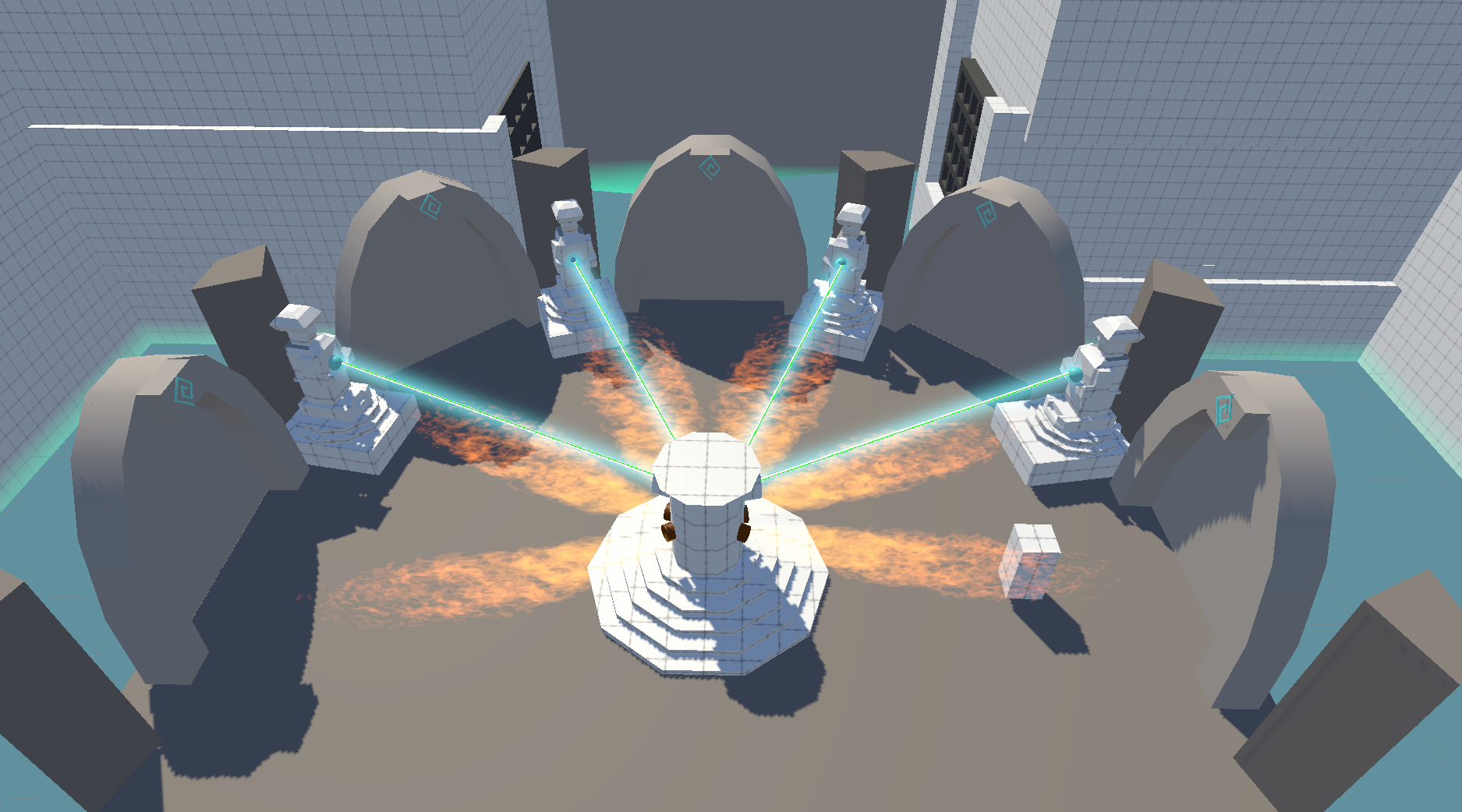Roles: VR and 3D Developer, Level Design, Environment Design | Team Size: 4
Elevator Pitch: VR Two-gether is a cooperative puzzle game where one player uses VR while the other uses PC, collaborating to solve challenges and progress through two levels featuring asymmetric mechanics and a balanced give-and-take dynamic.
Summary of Core Gameplay: Two players, one in VR and one on PC, must collaborate to progress through cooperative puzzles across two levels. Each level introduces asymmetric mechanics, with the first focused on movement and traversal and the second on shooting and shielding.
First Playtest
Gameplay and Level Design
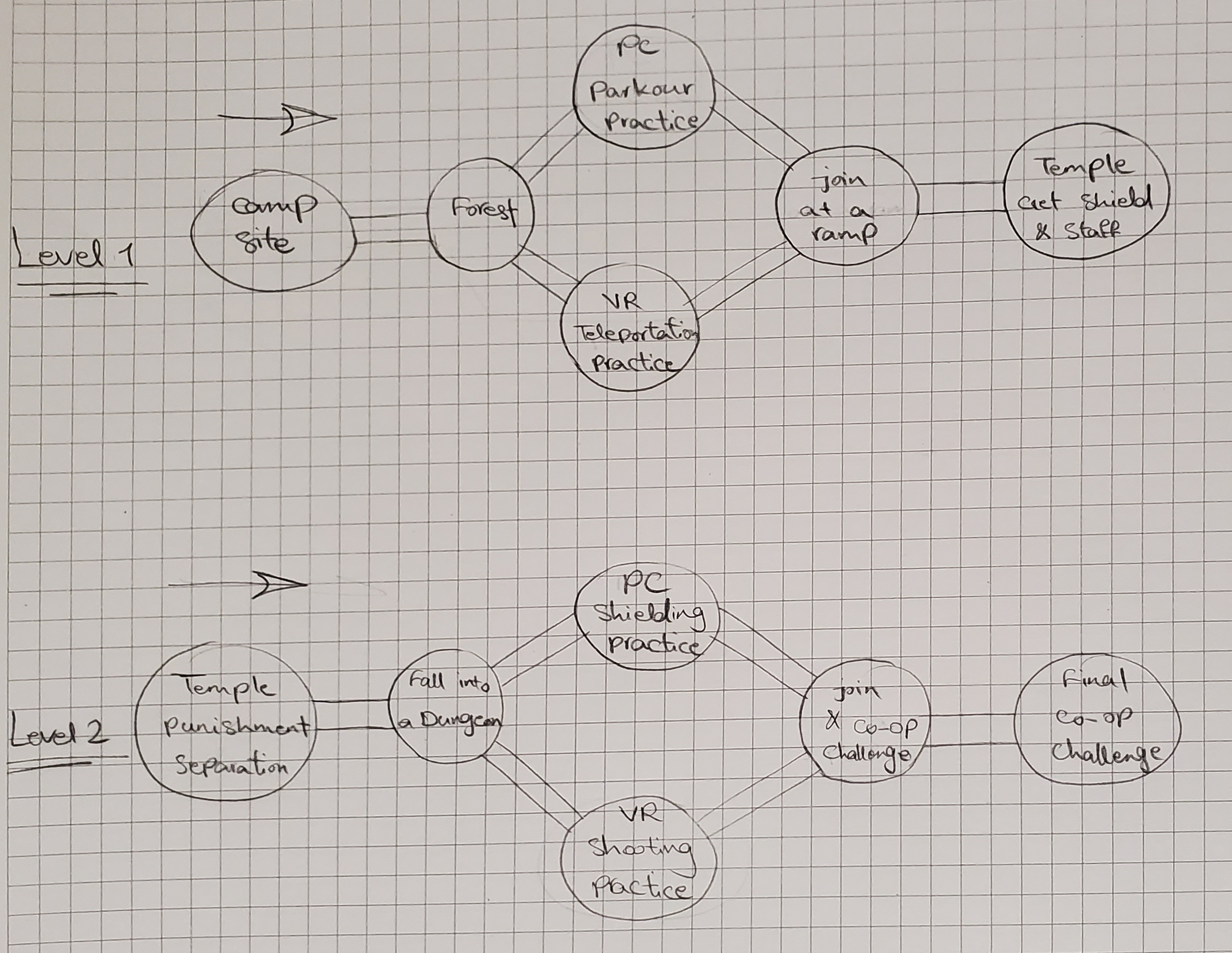 The game consists of two levels, each with tutorials for both players at the beginning and cooperative puzzle challenges throughout. These levels are designed based on a spectrum of different cooperative dynamics and different affordances for the VR and PC.
In the first level, players are introduced to core mechanics of movement and traversal, including asymmetric mechanics of parkour abilities for the PC player and teleportation for the VR player. Players have a chance to learn the controls and new mechanics in a short tutorial, then need to work together to overcome cooperative puzzle challenges.
The game consists of two levels, each with tutorials for both players at the beginning and cooperative puzzle challenges throughout. These levels are designed based on a spectrum of different cooperative dynamics and different affordances for the VR and PC.
In the first level, players are introduced to core mechanics of movement and traversal, including asymmetric mechanics of parkour abilities for the PC player and teleportation for the VR player. Players have a chance to learn the controls and new mechanics in a short tutorial, then need to work together to overcome cooperative puzzle challenges.
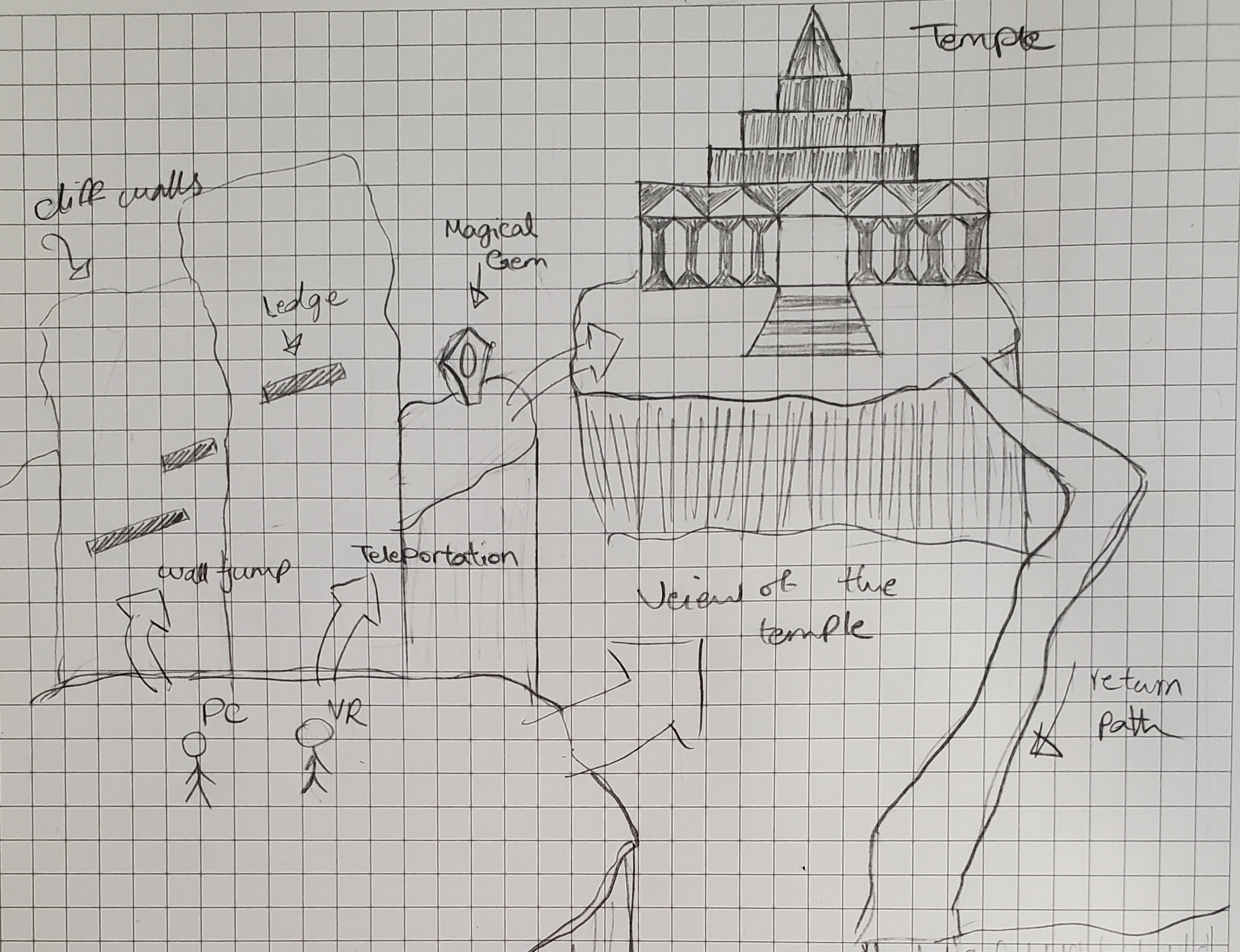 In the second level, asymmetric mechanics of shooting for the VR player and shield for the PC player are introduced. Similar to level one, players first have time to practice the mechanics at their own pace and then play together in cooperative challenges.
The game aims to encourage cooperation between the two players by designing challenges based on cooperative dynamics that create meaningful cooperation presented by Ptrick Redding in his GDC talk with the same topic. The PC player, a treasure hunter, is searching for treasure in ancient hidden cities while he/she meets the VR player, a time traveler. The two players have different skills to learn from each other, with the VR player having technology and futuristic knowledge, and the PC player having mythical knowledge of the ancient world. The two players have a mutual give-and-take relation and balanced abilities as the game progresses.
In the second level, asymmetric mechanics of shooting for the VR player and shield for the PC player are introduced. Similar to level one, players first have time to practice the mechanics at their own pace and then play together in cooperative challenges.
The game aims to encourage cooperation between the two players by designing challenges based on cooperative dynamics that create meaningful cooperation presented by Ptrick Redding in his GDC talk with the same topic. The PC player, a treasure hunter, is searching for treasure in ancient hidden cities while he/she meets the VR player, a time traveler. The two players have different skills to learn from each other, with the VR player having technology and futuristic knowledge, and the PC player having mythical knowledge of the ancient world. The two players have a mutual give-and-take relation and balanced abilities as the game progresses.
Project Goal:
The goal of VR Two-gether is to create a fun and challenging cooperative game that leverages the unique strengths of both VR and PC gameplay.
The game is designed to encourage players to work together, learn from each other, and overcome cooperative challenges in a balanced and mutually beneficial way.
My Roles and Responsibilities:
- Created the overall game concept, level design, puzzle design, and cooperative dynamics.
- Built the core game engine, programmed the game mechanics, and implemented the cooperative gameplay.
- Designed and created the game assets, including characters, environments, and special effects.
- Tested the game for bugs, glitches, and gameplay issues.
Tools and Technologies:
- Game Engine: Unity
- Programming Languages: C#, Python
- VR Hardware: Oculus Quest 2/Pro, HTC Vive
- PC Hardware: Windows PC
- Design Tools: Adobe Creative Cloud, Blender, Davinci
- Project Management: Trello, Miro, Plastic SCM
Challenges and Solutions:
- Balancing the game mechanics for both VR and PC players.
The team created asymmetric mechanics that leveraged the strengths of each platform and balanced the gameplay so that both players had a meaningful role to play in solving puzzles and progressing through the game. - Creating cooperative dynamics that encouraged players to work together.
The team analyzed successful cooperative games and used design patterns to create challenges that required players to communicate, collaborate, and learn from each other in order to succeed. - Managing cross-platform development and testing.
The team used a combination of virtual machines, physical devices, and cloud testing platforms to ensure that the game worked seamlessly on multiple platforms and devices.
Links, Credits and More:
Overall, VR Two-gether is a challenging and engaging cooperative game that leverages the strengths of both VR and PC gameplay. The game is designed to encourage players to work together, learn from each other, and overcome cooperative challenges in a balanced and mutually beneficial way.First Prototype

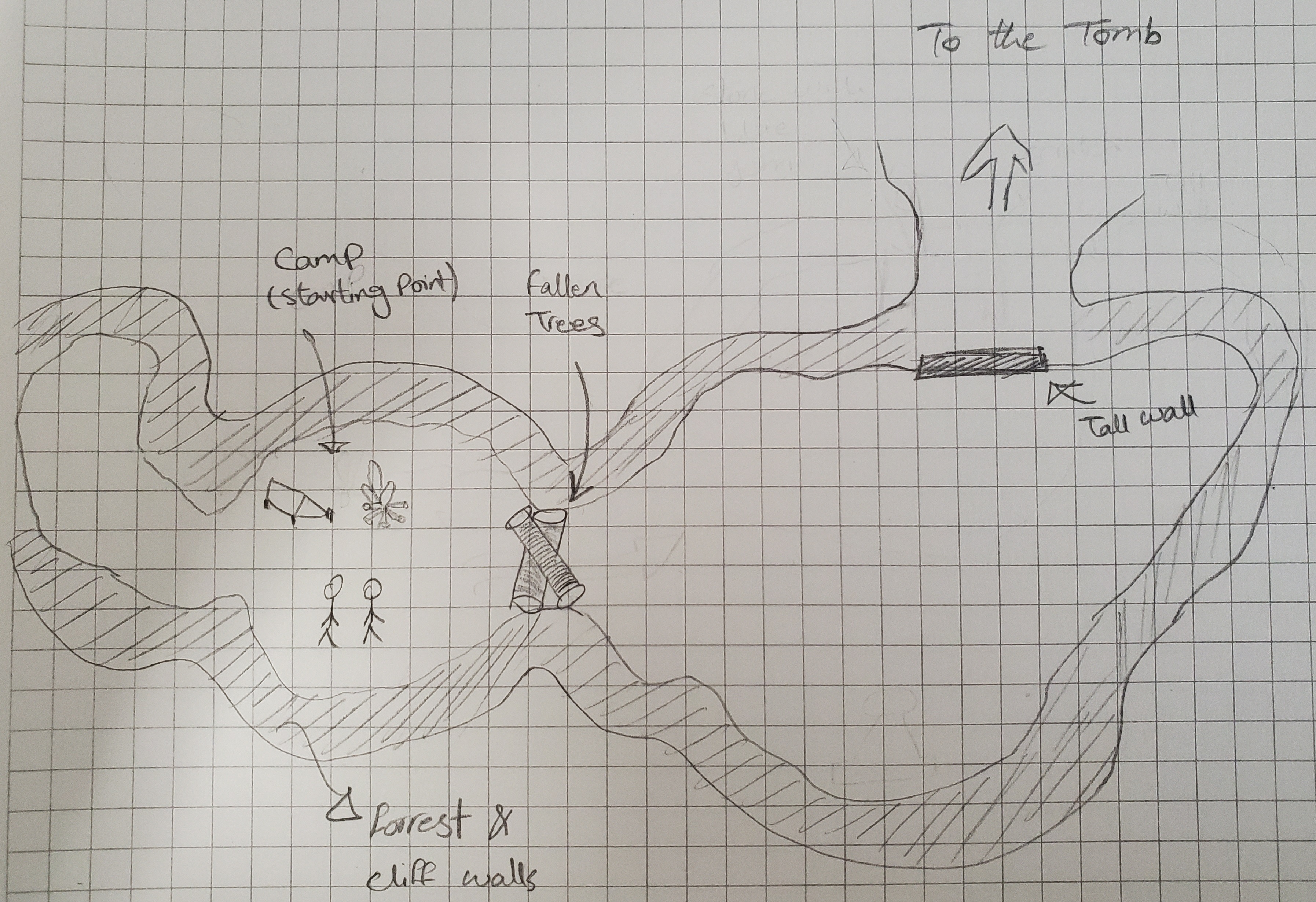
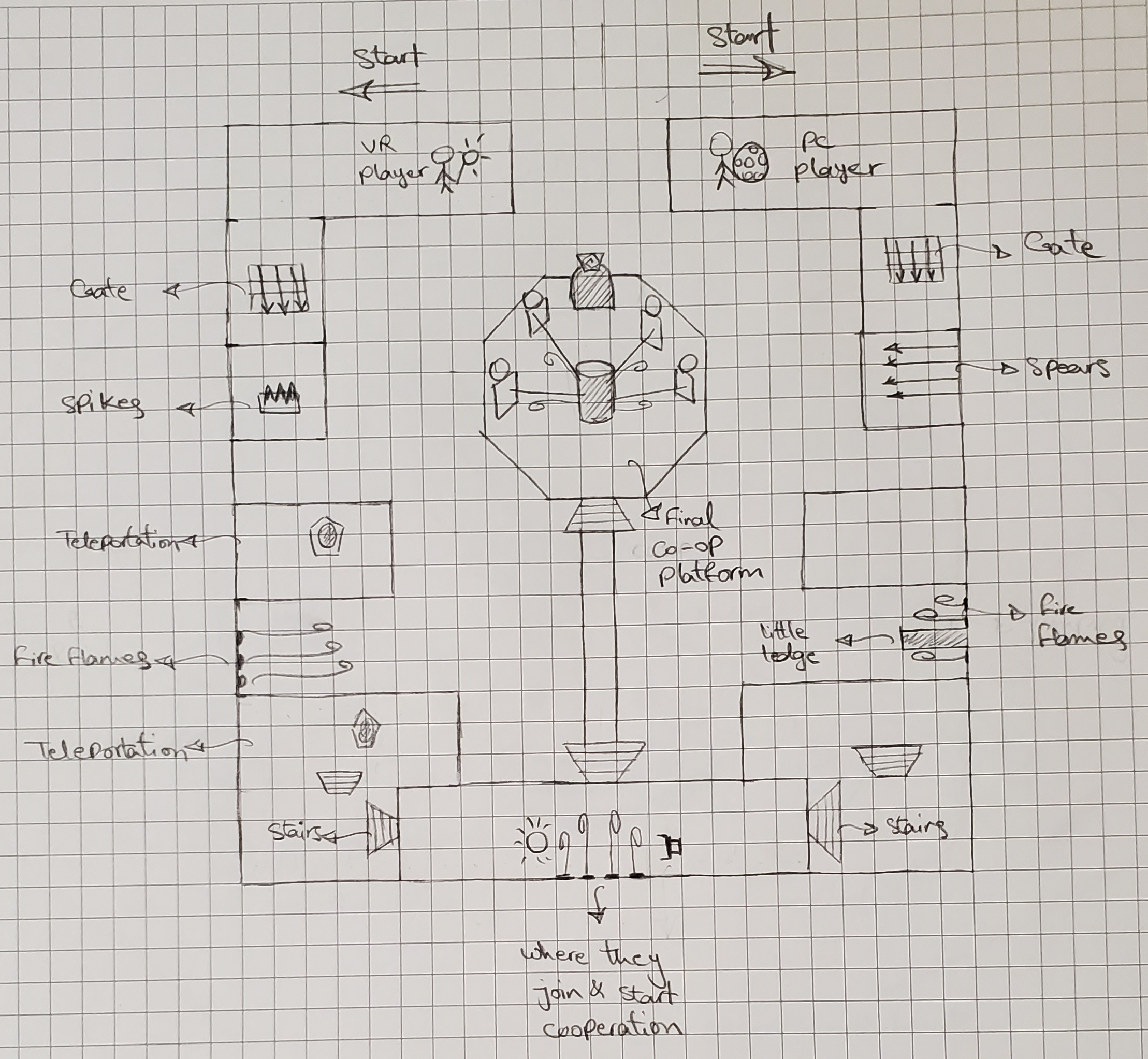
.jpg)

